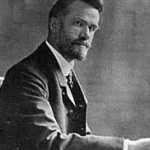 The literature on leadership issues, both within and outside of Christian circles is vast. Indeed, the subject has been overdone and over-worked at this point. Early in this second chapter John Dickson gives us a description of leadership— “the art of inspiring others in a team to contribute their best toward a goal.” (p. 33). He is certainly right that it is an art, not an exact science as is always the case when you are working with other human beings. One has to be flexible and even intuitive. Needless to say, leadership is about a person or person’s way of relating to a group of people. It is not about private individual behavior. No one leads themselves, unless of course you mean something like ‘leading oneself astray’. A leader is not just a high achiever or an A type personality who has had individual success. For example, you would never call a star in an individualistic sport like golf a ‘leader’. There may be many fans and admirers, but there are no followers.
The literature on leadership issues, both within and outside of Christian circles is vast. Indeed, the subject has been overdone and over-worked at this point. Early in this second chapter John Dickson gives us a description of leadership— “the art of inspiring others in a team to contribute their best toward a goal.” (p. 33). He is certainly right that it is an art, not an exact science as is always the case when you are working with other human beings. One has to be flexible and even intuitive. Needless to say, leadership is about a person or person’s way of relating to a group of people. It is not about private individual behavior. No one leads themselves, unless of course you mean something like ‘leading oneself astray’. A leader is not just a high achiever or an A type personality who has had individual success. For example, you would never call a star in an individualistic sport like golf a ‘leader’. There may be many fans and admirers, but there are no followers.
Perhaps the most valuable section in this chapter is the discussion of the tools of leadership. Dickson lists four such tools: 1) ability; 2) authority; 3) persuasion; and 4) example. Dickson emphasizes the last two especially, and says that a least some of 1) is necessary, but interestingly 2) is not an absolute requirement. So, leaders tend to be persons who to some extent have excelled in their field. By authority Dickson means the structure authority handed to a person by an organization. But he is able to list a variety of people who did not have this, and yet had enormous influence as leaders. Jesus comes to mind 🙂 A good leader tends not to rely on just power or institutional authority. They seek to persuade and win people over to their views, plans, vision. Being a good communicator is for the most part an essential of being a good leader. There are rare exceptions, but that is exactly what they are. One of the key insights in this section is that people tend to believe people that they trust, and the converse is also true. It has been stressed by Stephen Covey and others that character counts enormously if one is to be a good leader. Covey himself stresses patience, humility, integrity, courage, justice/fairness, patience, industry, modesty, simplicity. Of course we can all think of examples that lack many of these traits. The slave driving boss whom no one really much likes or wants to emulate but nonetheless gets lots done. But in general “Character is central to leadership. Unless a leader is trusted by the team, she will not get the best out of them.” (p. 41).
The reason Dickson thinks persuasion and character are at the very heart of good leadership is of course because leading involves relationships. Leading involves a set of human interactions, not a mechanical process. How does all this relate to humility? Dickson’s answer is a syllogism:
1)persuasion and example are a key to good leadership and,
2) humility enhances persuasiveness, because it is an endearing and even at times compelling character trait amongst leaders (he gives various examples), so
3) therefore humility is crucial to good leadership. This leads us to Chapter Three.












